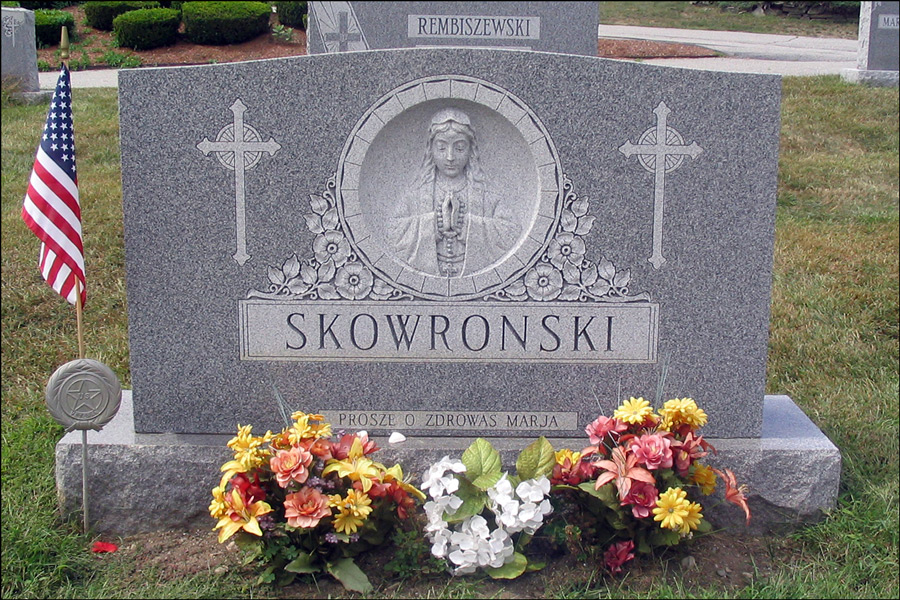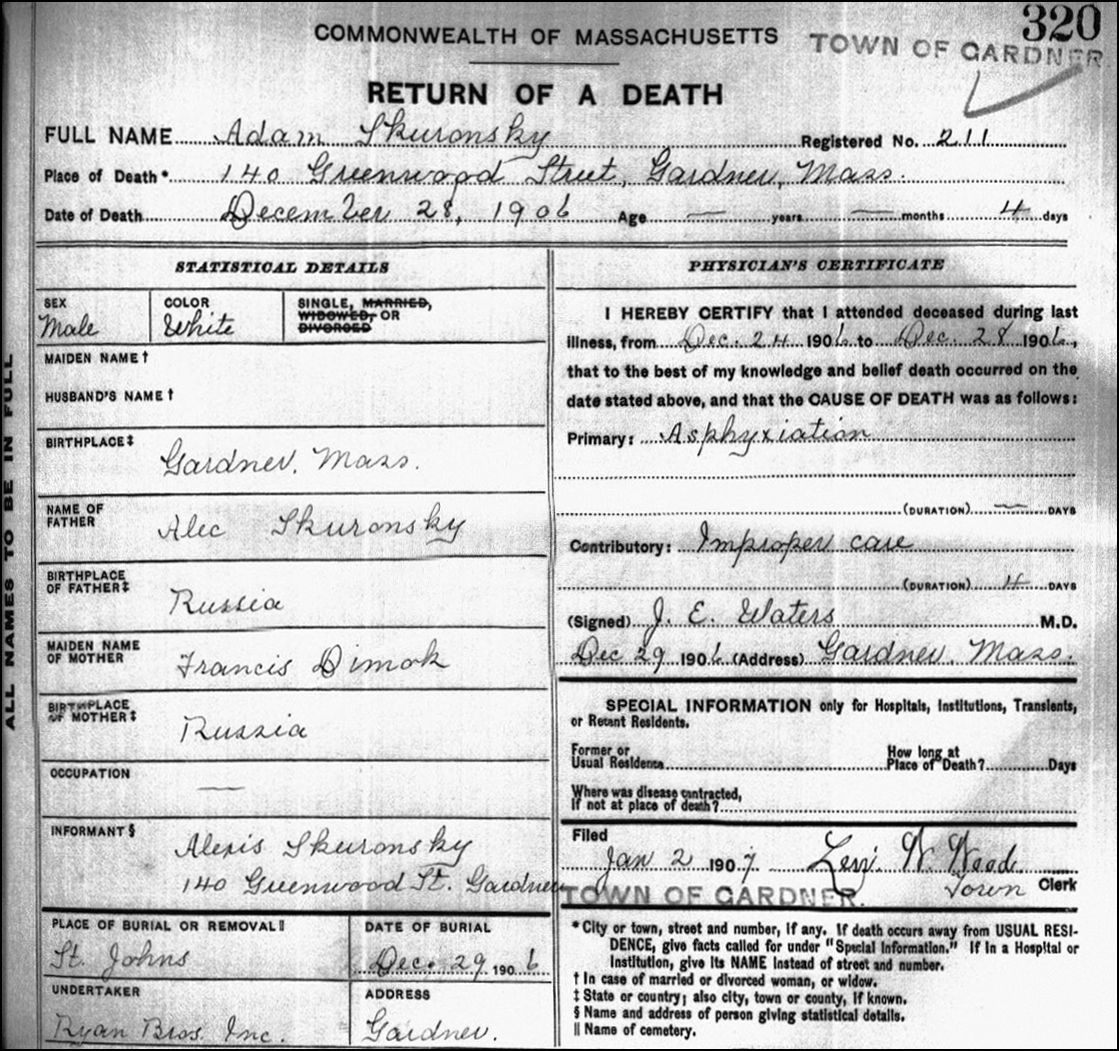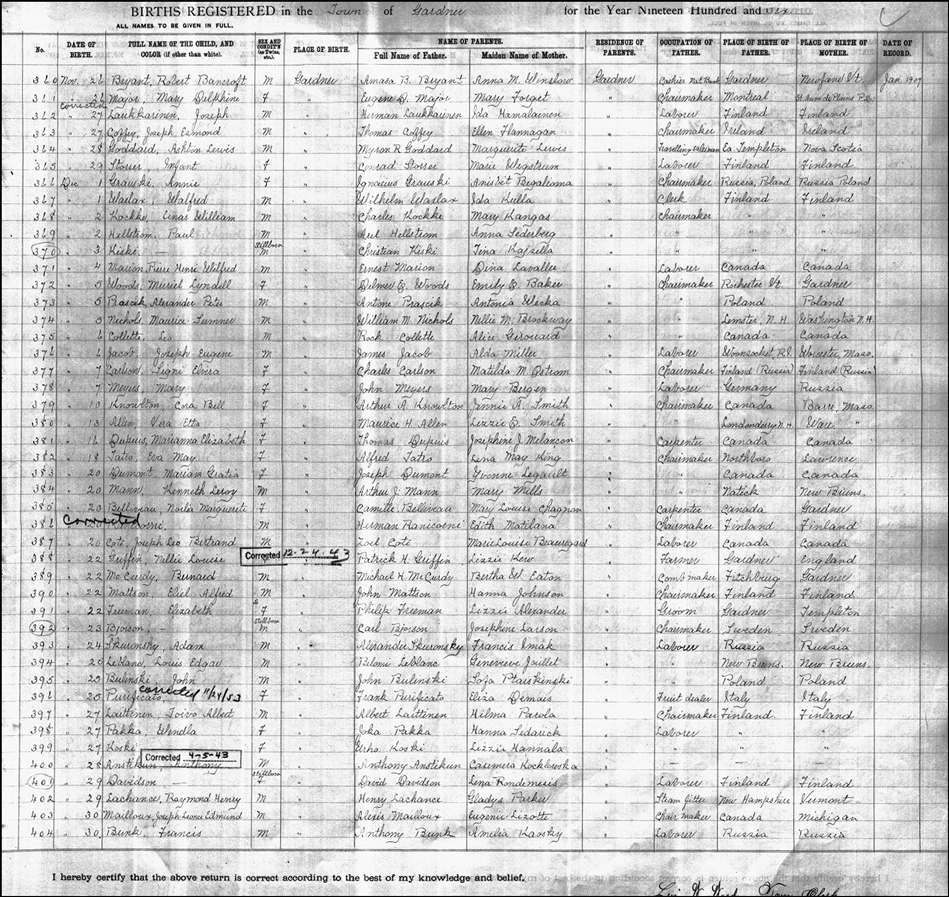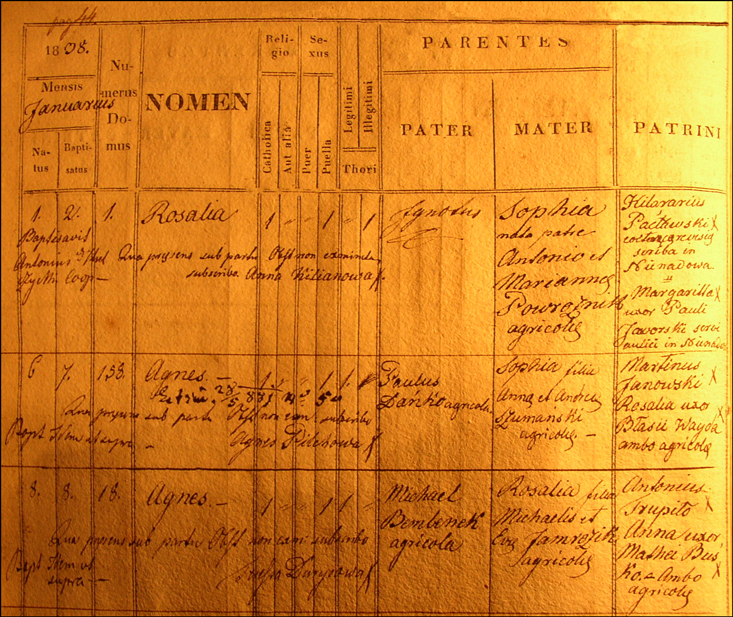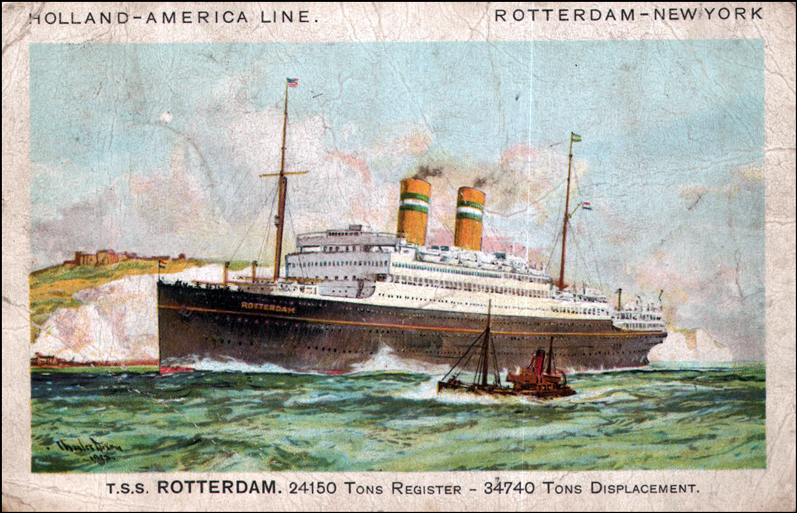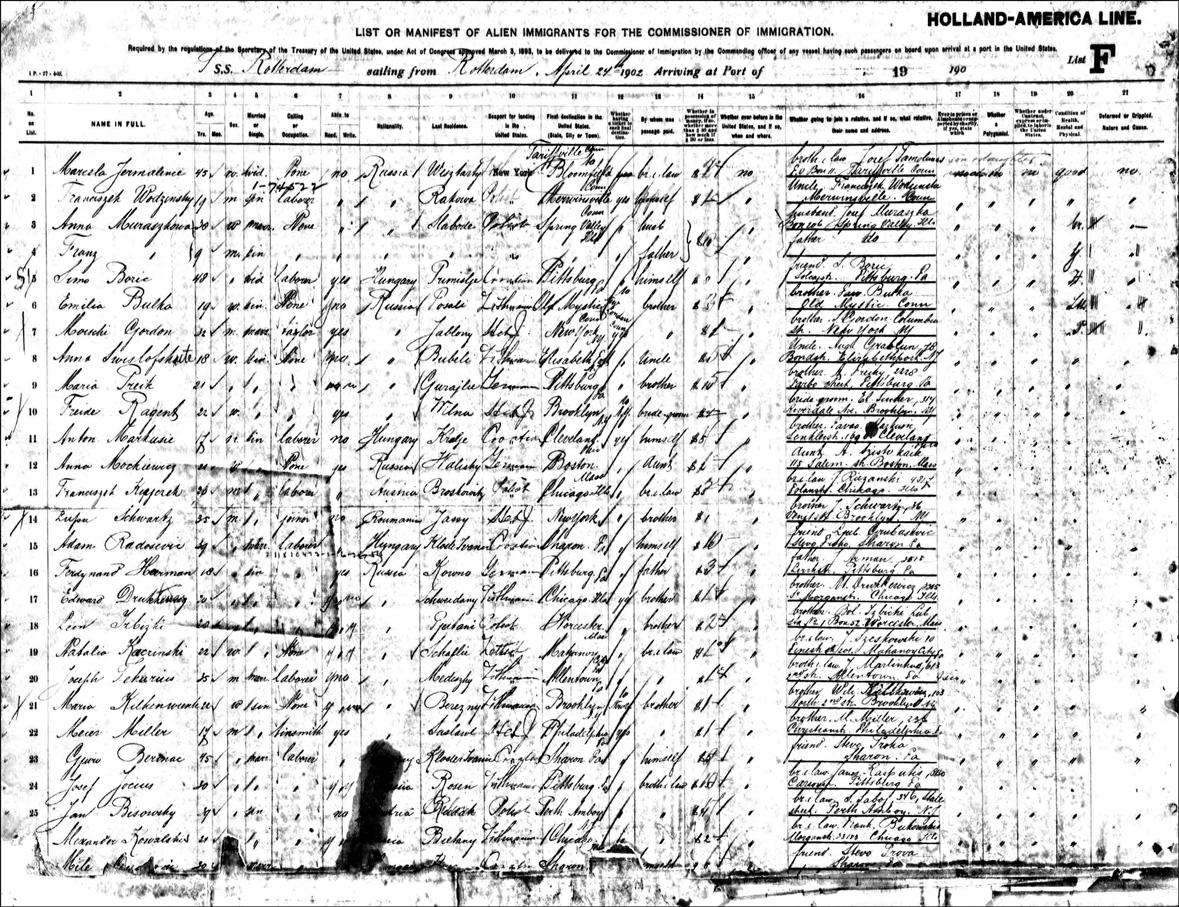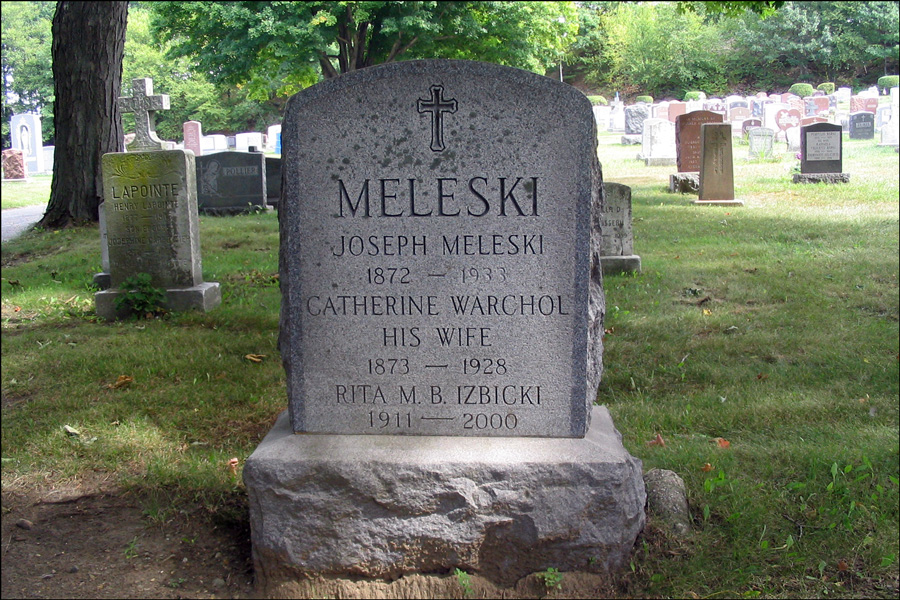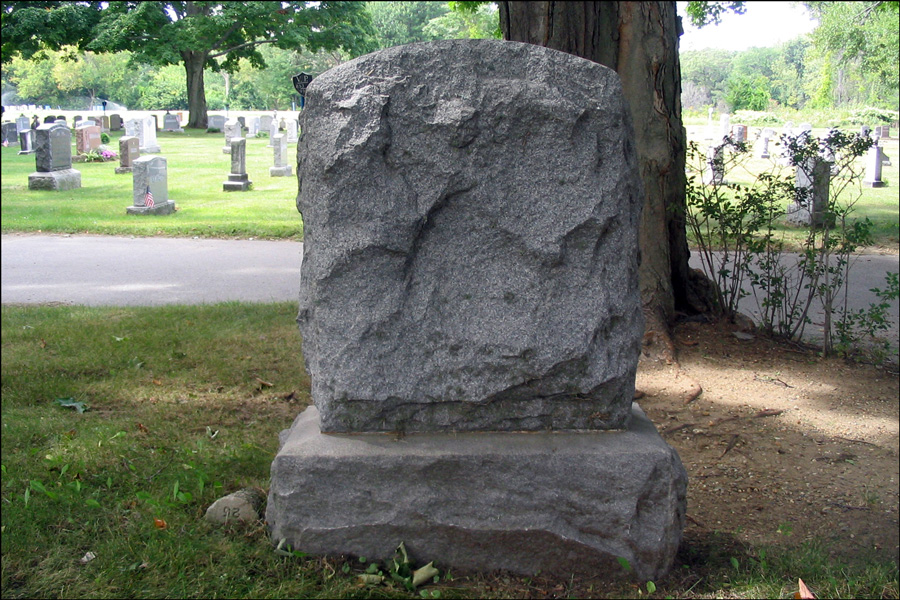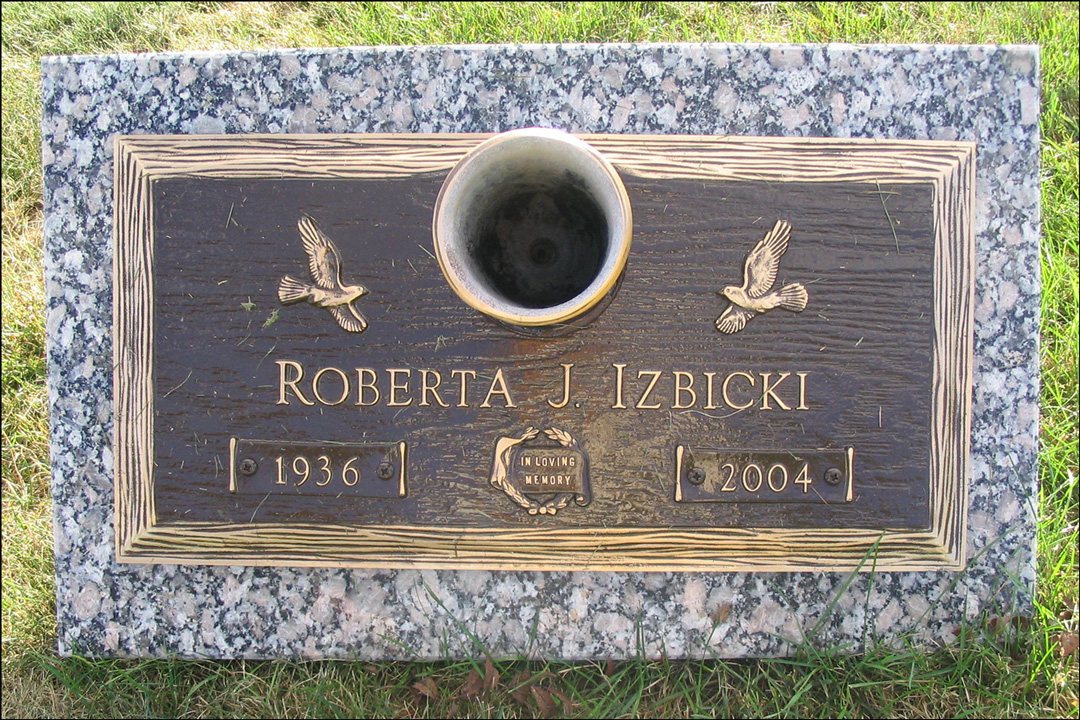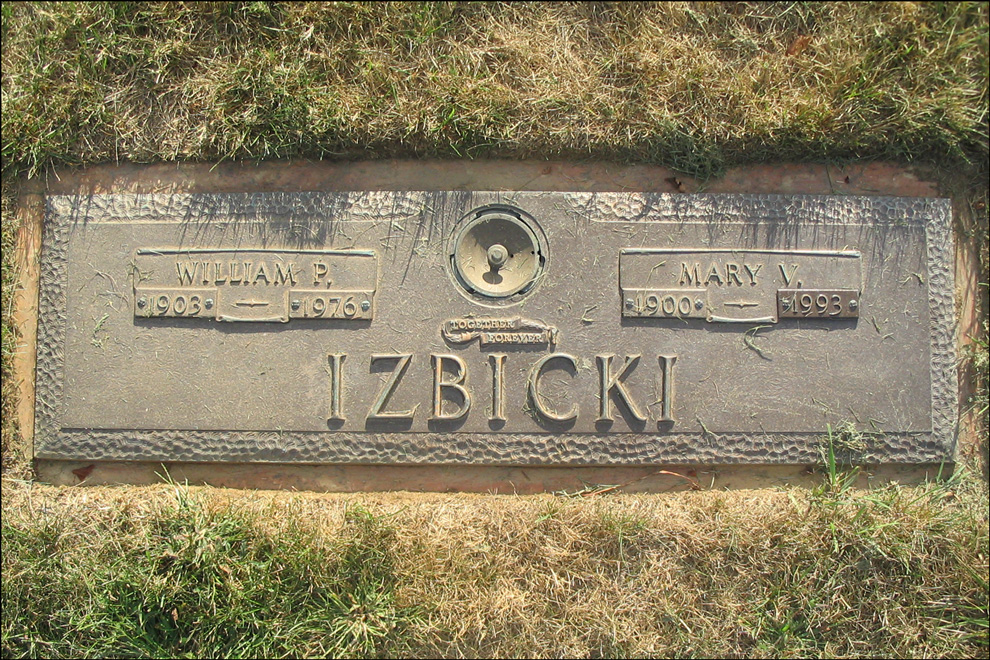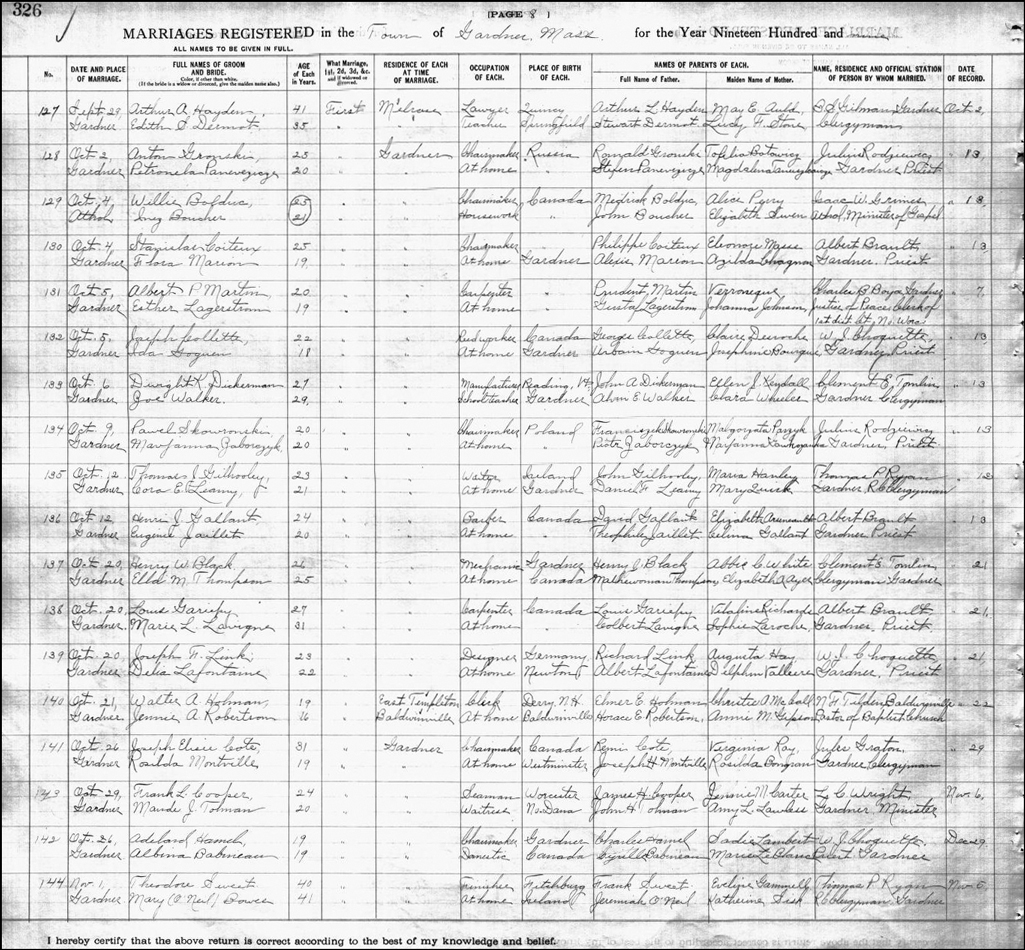The parents of Adam Skowronski, who birth and death records I posted yesterday and the day before, was Alexander Skowronski and Frances Dymek . They are buried in Notre Dame Cemetery in Worcester, Massachusetts.
Skowronski, Dymek, Danko Monument – Front
Skowronski, Dymek, Danko Monument – Back
SOURCE: Alexander Skowronski, Frances Dymek, Michael J. Danko, Jean B. Skowronski Sharron grave marker, Notre Dame Cemetery, Holy Family Section, Lot 245, Graves 1, 2, 3, 3OB, 4 (Worcester County), Massachusetts, photographed by Stephen J. Danko, 09 Sep 2005.
This marker shows that Alexander Skowronski (1887-1970) and his wife Francis Dymek (1888-1963) are buried here along with Michael J. Danko (1913-1981) and his wife Jean B. Skowronski Sharron (1917-1996).
Jean B. Skowronski Sharron was the daughter of Alexander Skowronski and Frances Dymek .  Jean was also the wife of my paternal uncle, Michael J. Danko . Jean’s full name on the gravestone reflects the fact that she was married to Robert H. Sharron before his untimely death in 1946 . Robert Sharron is buried elsewhere in Notre Dame Cemetery.
The motto on the front of the monument reads (in Polish) “Proszę o Zdrowaś Marja”, which means “I ask for a ‘Hail Mary’ “.
Alexander is buried in Grave 1, Frances in Grave 2, Jean in Grave 3, and Michael in Grave 4 . Cemetery records show that there is another burial in this lot (in Grave 3OB), not inscribed on the monument . In addition, the lot contains two additional markers flush with the ground.
Tomorrow: About the additional burial and the two additional markers.

